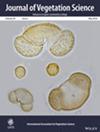Species–Habitat Associations in a Sri Lankan Dipterocarp Forest
Abstract
Questions
A non-random spatial distribution of species in relation to environmental factors is an important mechanism for maintaining high tree diversity in tropical forests. Niche theory predicts that competing species should use the environment differently. However, we have only limited information on the extent to which environmental dependence and the relative importance of different types of environmental factors vary between species. It is also unclear how the environmental dependence differs according to life stage and species.
Location
Here we investigate the environmental variables that determine the spatial distribution of tree species in a 25-ha plot of mixed-dipterocarp tropical rainforest in Sri Lanka.
Methods
We compiled data on the spatial distribution of recruits, saplings, and adults of 57 tree species, as well as topographic and soil variables, and applied methods of spatial point process theory to estimate parametric spatial intensity functions for each life stage of the species as a function of environmental variables.
Results
Most species distributions were significantly associated with at least one environmental variable, with elevation and the first principal component of soil nutrients being the most important ones. With few exceptions, species showed an intermediate strength of environmental dependence, and we observed a striking similarity in the intraspecific environmental dependence between life stages. Finally, only a few species showed for the same life stage strong positive or negative correlations in their intensity functions, while most species pairs showed only weak or no correlations at all.
Conclusions
Taking together, our results indicate that the distribution of most of the more abundant species in our forest plot is influenced by local heterogeneity in environmental conditions, and that their environmental preferences lead to a spatial arrangement where competing species use the environment somewhat differently. Overall, our study provides a nuanced understanding of the complex environmental dependencies that shape tropical rainforest ecosystems at local spatial scales.


 求助内容:
求助内容: 应助结果提醒方式:
应助结果提醒方式:


